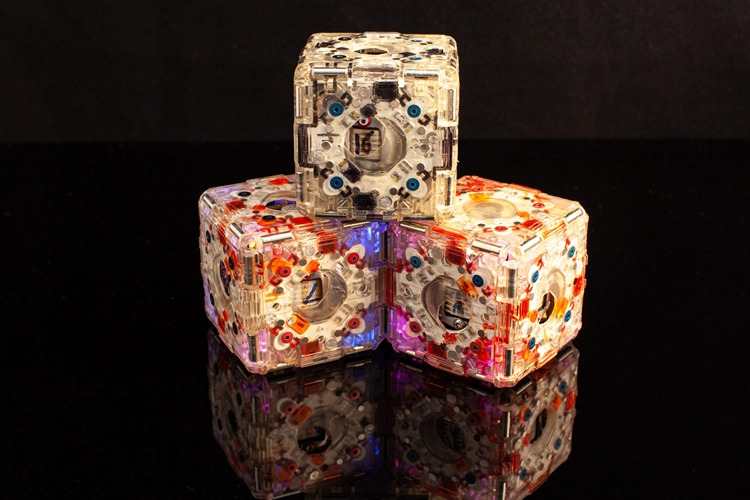A robot is a machine designed to execute one or more tasks automatically with speed and precision. There are as many different types of robots as there are tasks for them to perform. Robots that resemble humans are known as androids; however, many robots are not built on the human model. Industrial robots, for example, are often designed to perform repetitive tasks that aren’t facilitated by a human-like construction.
The industrial robots are the most advanced example of smart robots. which has a built-in artificial intelligence (AI) system that can learn from its environment and its experience and build on its capabilities based on that knowledge.
Very soon a new member is coming to join the group of industrial robots, and it’s being believed that the entry of this new member, named ‘M-Blocks 2.0: the self-assembling modular robot’, going to bring a new era to the generation of industrial robots.

These types of robots named ‘M-Blocks 2.0’ are kind of self-assembling robotic cubes that can climb up and also capable of rolling across the ground. Researchers from MIT’s Computer Science and Artificial Intelligence Laboratory (CSAIL) have developed these kinds of self-assembling robotic cubes which has a built-in artificial intelligence system and using this smart AI technology they can learn from its environment and its experience and also it is built on its capabilities based on that knowledge. This project of creating a smart self-assembling modular robot was planned back in 2013. And this project of making such smart self-assembling robotic cubes dubbed as ‘M-Blocks 2.0’ is the second version of project MIT unveiled back in 2013.
This new generation of ‘self-assembling robotic cubes’ has easily earned the tag of ‘smarter and more intelligent’ robotic cubes. And also With the new iteration, these M-Block cubes have gained the capability to communicate with one another using a “barcode-like system” present on each face of the cube. And now the new ‘M-Blocks 2.0’ can also identify each other (other robotic cubes) using this barcode reading process. This process allows them to communicate and accomplish simple tasks like, following a path of arrows, etc. These smart self-assembling robotic cubes can also find each other and cluster together as well as they can also follow a light source.
Every M-Block has a fly-wheel that does 20,000 revolutions per minute. Permanent magnets are equipped on each face so that cubes could attach.
The internal structure of these smart robotic cubes allows them to move completely on their own. The presence of magnet on each face of the cubes allows them to be attached and also they can travel along other blocks, climb up their neighbors and also can climb down them and even they can jump over the nearest one. They can move so easily unlike any other robotic cubes because the momentum is created by applying a break to the internal flywheel.
The unique thing of these self-assembling robotic cubes is that they are inexpensive, robust, and potentially easier to scale to a million modules. And as the internal mold of these ‘M-Blocks 2.0’ is less complicated and is more scalable, it’s staying ahead by a long margin of distance from its other competitors.
The researchers aim to improve M-Blocks to be used in disaster management situations. And they also hoping that these robotic cubes could be used for rescue operations by building a staircase in a building on fire.
Now, coming out from these paper works and plans of the usage of these self-assembling robotic cubes is the feature named M-Blocks 2.0.
Thus, everyone is hoping for these self-assembling robotic cubes to be mature and useful enough to be a practical application rather than just ending up in the laboratory as a lab-testing product considering the proposed use-case.






![Best DP for Girls [Stylish Facebook & WhatsApp Profile Pictures] 2023 DP for Girls](https://geekyfy.com/wp-content/uploads/2019/06/Best-DP-for-Girls-218x150.jpeg)
















